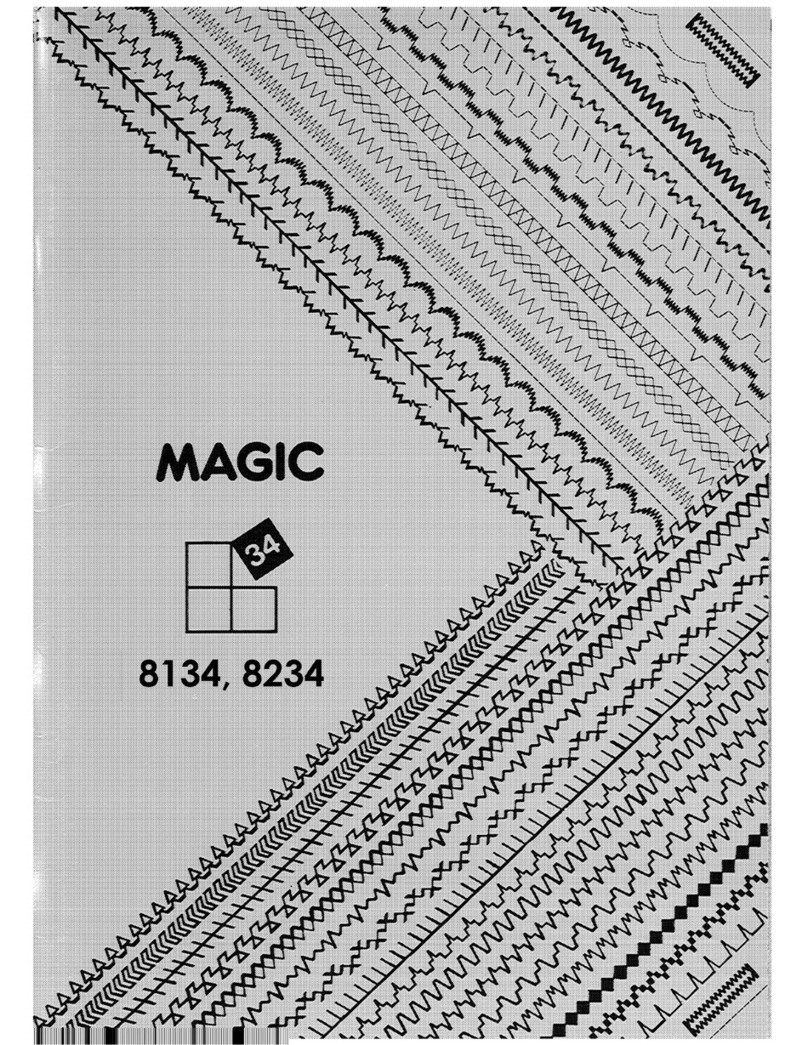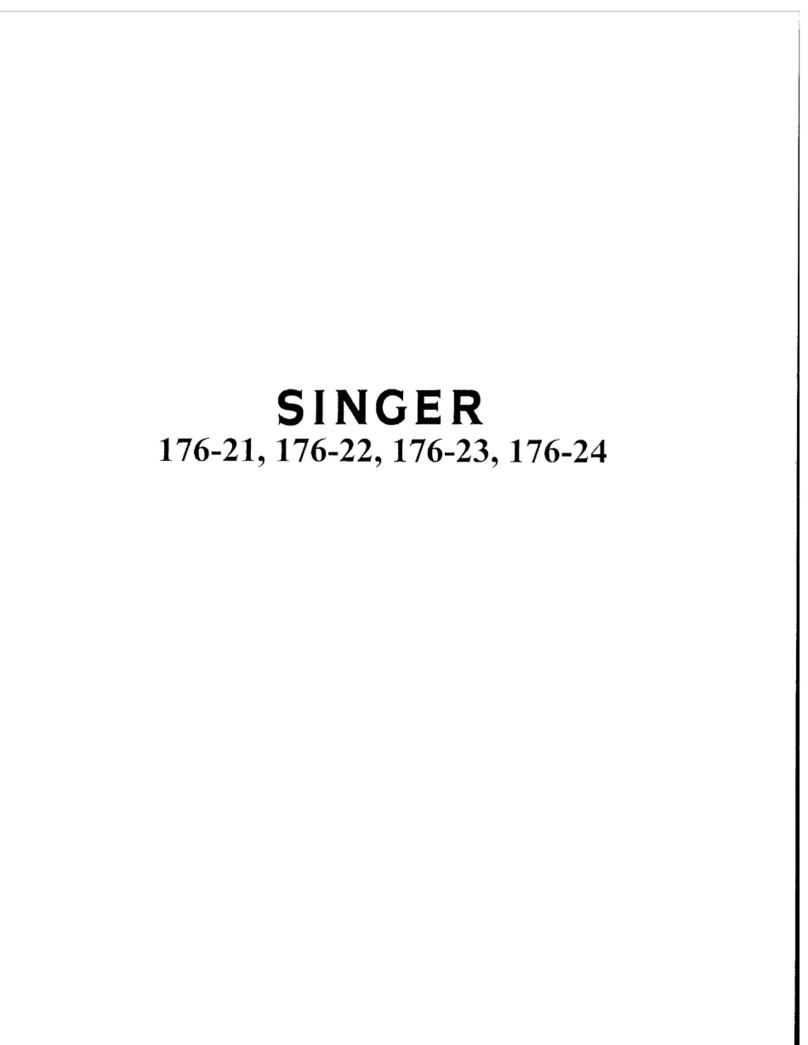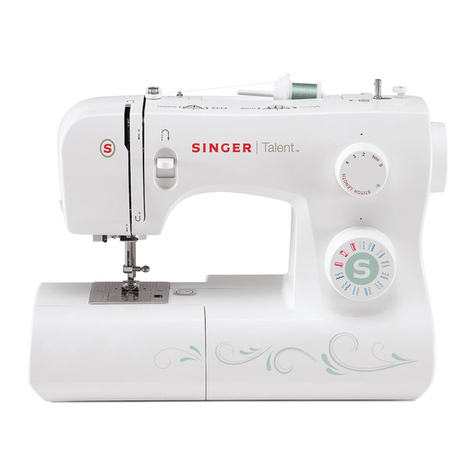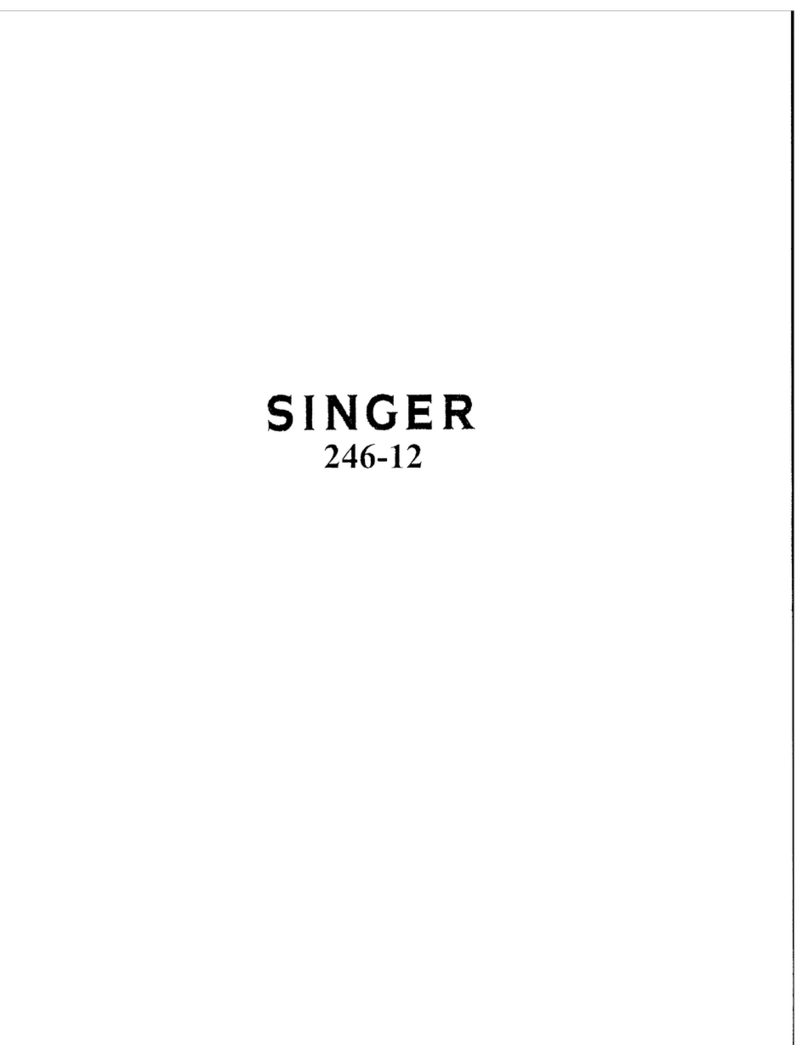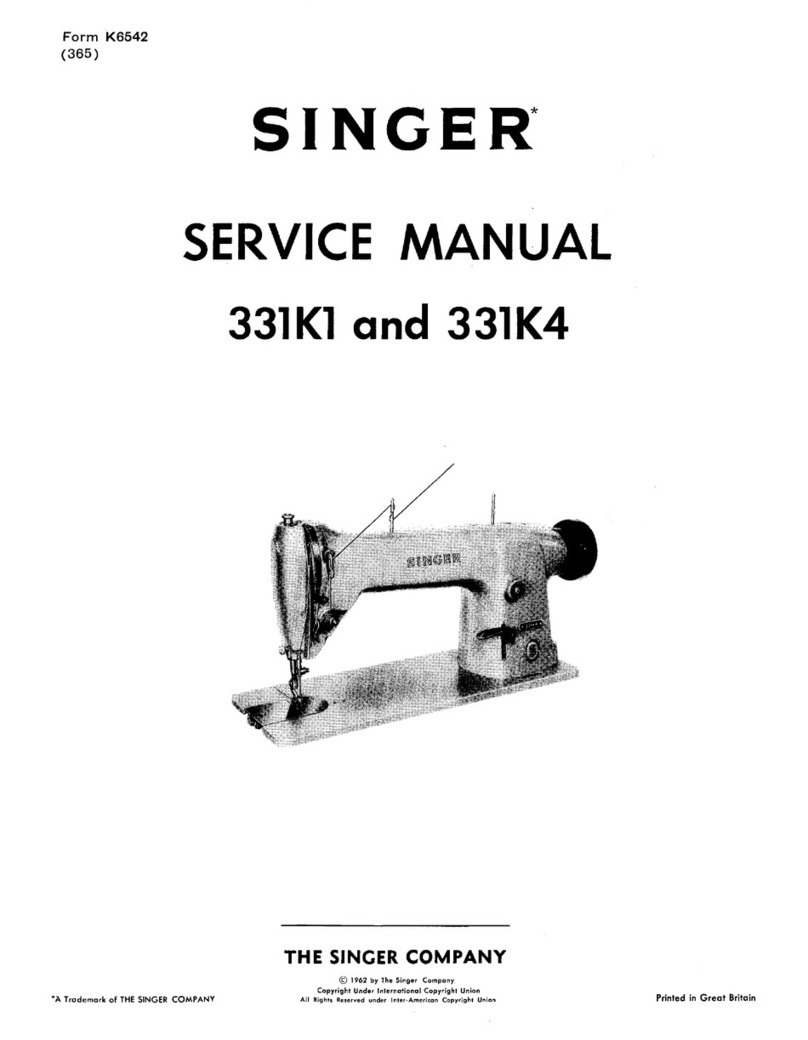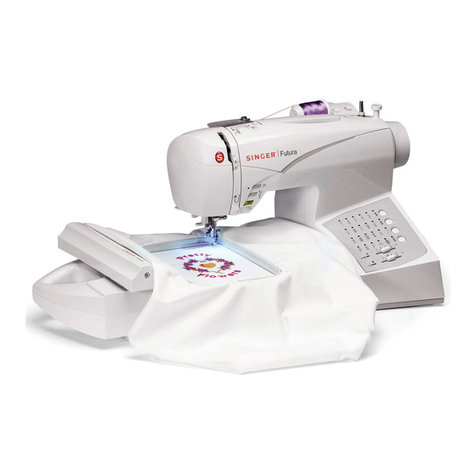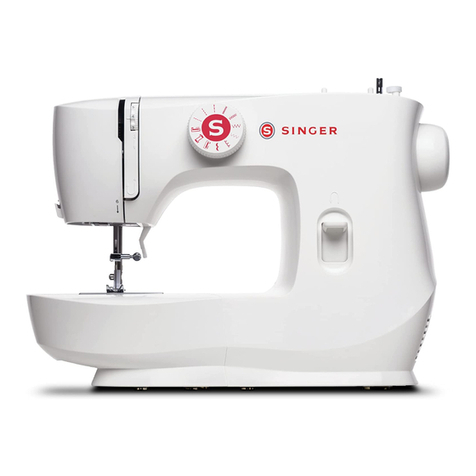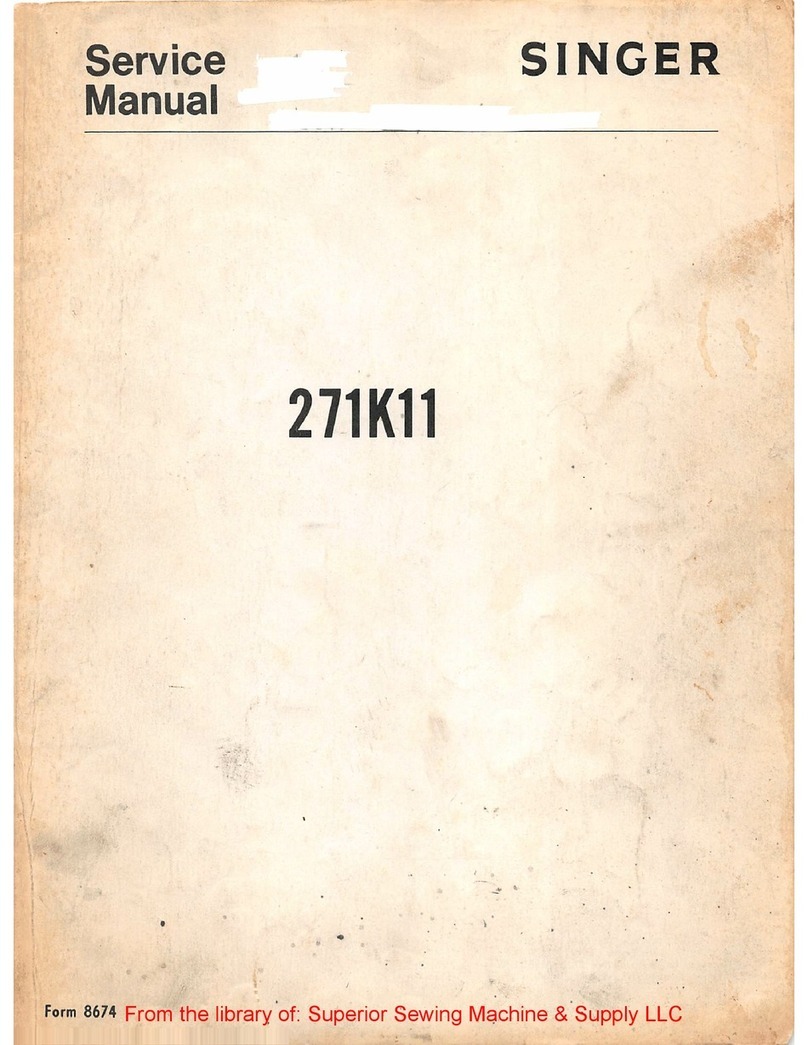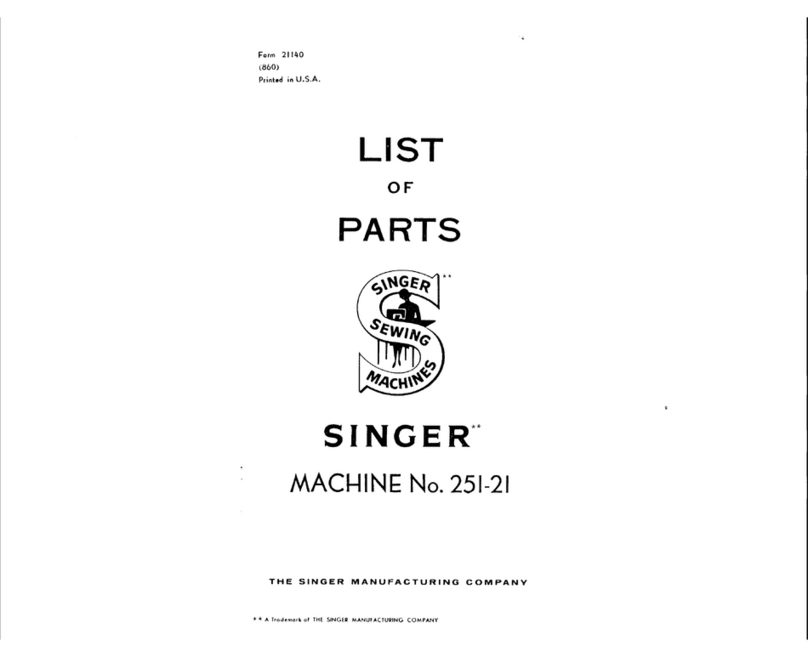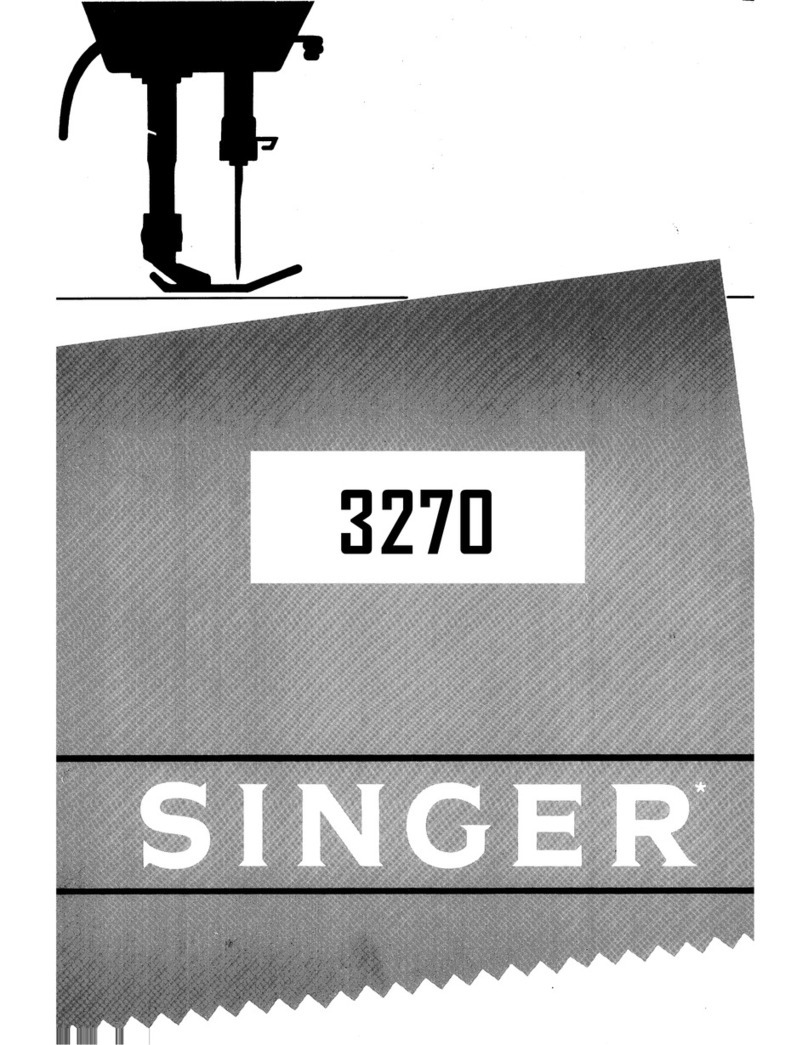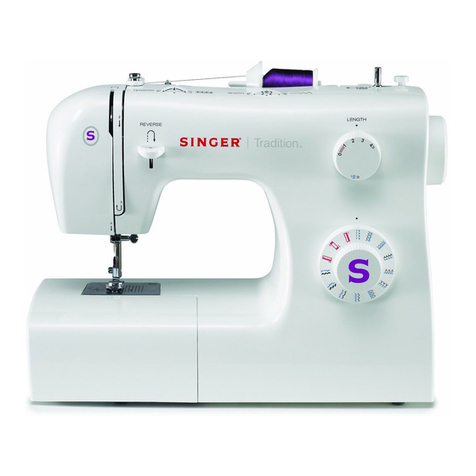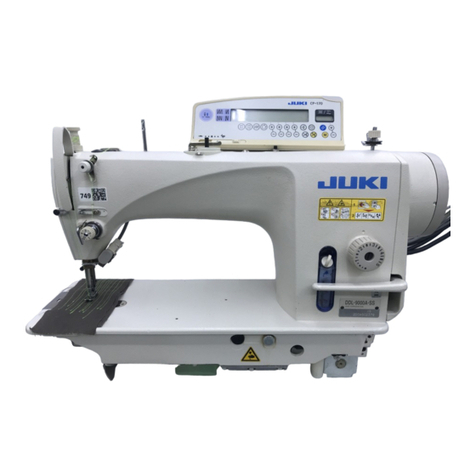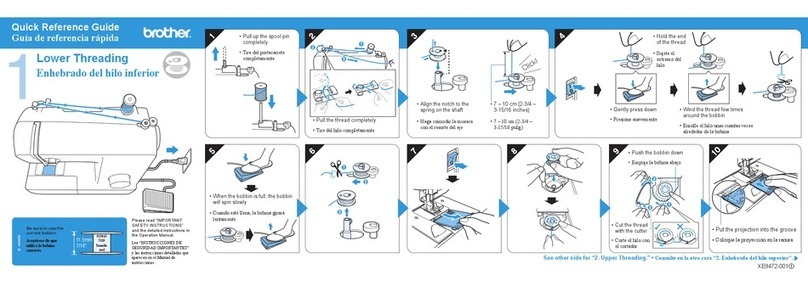
7GB/IE
Sewing Machine
Safety information
A damaged power cable must be replaced by the manufacturer, dealer,
or other qualified person to prevent potential hazards.
This product is not suitable for persons with physical, sensory and mental
limitations (including children) or lacking the experience or knowledge to
handle this product. This product may be used after being instructed on
its use by a responsible person. This person is responsible for its safe use.
Ensure small children do not play with this product.
Switch off or unplug the machine when left unattended.
Unplug from the mains before maintaining the machine.
If the lighting unit is damaged, it must be replaced by authorised retailer.
Always observe basic safety instructions when using this machine.
Carefully read all instructions before using the machine.
Prevent electric shock
Never leave the machine unattended whilst connected to the mains.
Unplug from the socket after use and before cleaning.
Prevent fires, electric shock
and personal injuries
The mains voltage (voltage of the socket connection) must match the
voltage of the motor.
Only use the machine for the purposes specified in these instructions.
Only use the accessories recommended by the manufacturer in these
instructions for use.
Unplug from the socket or switch off the machine when performing any
work near the needle, such as threading the needle or looper, or when
switching the needle, needle plate, or presser foot.
Unplug the overlock machine from the socket when removing covers,
oiling, or performing any other maintenance by the user as described in
these instructions for use.
Adjusting the motor belt yourself is prohibited. You must contact the
service representative if such adjustments are necessary.
Do not unplug the power plug by the lead, always hold by the plug.
Handle the foot control carefully and do not let it fall to the ground. In
particular, do not place objects onto the foot control.
Always use the correct needle plate. The wrong needle plate can cause
the needle to break.
Do not use bent needles.
Keep your fingers away from any moving parts whilst sewing. Be espe-
cially careful near the overlock needles.
Do not pull or push the fabric whilst sewing. This can bend or break the
needle.
Only lift or carry the machine by the handle.
Never operate the machine if the cable or plug are damaged, the
machine is not working properly, has fallen to the ground, or if damaged
or wet. If an inspection or repair is necessary, or electrical or mechanical
adjustments are required, bring the machine to your nearest authorised
dealer or to a customer service location.
The machine may not be operated if venting ports are sealed. Keep the
vents of the machine and foot control free from lint, dust, and loose fabric.
Do not allow any objects to fall into the openings of the machine.
Do not operate the machine outdoors.
Never operate the machine in locations where sprays or pure oxygen
are used.
Do not use the machine as a toy. Use maximum attention if the machine
is being operated by or in the presence of children.
Do not expose the machine or the machine case to direct sunlight or very
hot or humid indoor climate.
Never touch the machine, foot control or the power cable with wet
hands, wet cloths, or other wet objects.
Do not connect the power plug to a power strip with several leads of
other appliances connected.
Only use the machine on a level and stable table.
Close the machine‘s free arm and hook looper cover before every startup.
Keep presser feet and needles out of the reach of children.
Do not disassemble or modify the machine yourself.
Before maintaining the machine, verify the power switch is off and the
machine is unplugged from the socket.
PLEASE KEEP THESE INSTRUCTIONS IN A SAFE PLACE
Any service must be performed by authorised service technicians.
This product is not intended for industrial use.
Introduction
Congratulations on the purchase of this sewing machine. We are
certain you will be very happy with this product. To ensure you
will be using the product in safely and correctly, we ask you to
observe the following instructions. Read these instructions for use before use,
and follow the safety instructions and information. Keep these instructions for
future reference and be sure to pass them on to other users.
Intended use
This sewing machine will handle a variety of fabrics, from cambric to denim.
Optimal use and maintenance are described in these instructions. This prod-
uct is not intended for industrial use.
Parts description
1Thread guides with spool stand
2Spool pin
3Spool holder
4Thread bar
5Feed regulator wheel
6Hand wheel
7Power- and light switch
8Feed adjuster
9Looper cover
10 Seam width finger support plate
11 Free arm cover
12 Throat plate
13 Thread tension dial left needle (blue)
14 Thread tension dial right needle (green)
15 Carrying handle
16 Upper looper thread tension dial (orange)
17 Lower looper thread tension dial (yellow)
18 Presser bar lifter
Technical Data
Sewing speed:
Stitch length:
Differential feed ratio:
Overlock stitch width:
Needle bar stroke:
Presser foot stroke:
Needle:
Model:
Number of threads:
1,300 rpm
1–4mm (standard: rolled hem, F-2, regular
overlock: 3.0)
1:0.7-1:2 (for machines with differential
feed)
rolled hem: 1.5mm,
regular overlock 3.0-6.7mm
27mm
4.5mm
SINGER N° 2022 # 11
SINGER N° 2022 # 11, #14
S010L
2,3,4
347907_BE 7 24-Apr-2020
